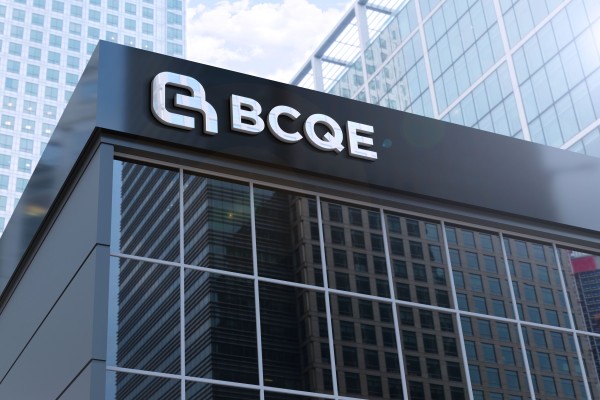Press Release
Everything You Need to Know About Laser Cutting
Laser cutting is revolutionizing the world of metal fabrication, and it’s no wonder that industries ranging from aerospace to automotive are increasingly relying on this technology. As one of the most advanced and efficient methods for cutting materials, the laser cutting machine stands out for its ability to provide precision, speed, and versatility, making it a top choice in modern manufacturing.
At its core, laser cutting uses a highly focused beam of light to slice through materials with unparalleled accuracy. This non-contact process is not only fast but also delivers an incredibly smooth and clean finish, reducing the need for secondary treatments. But why is laser cutting so popular today?
The answer lies in its efficiency. Compared to traditional cutting methods, such as milling or mechanical cutting, laser cutting significantly reduces production time while maintaining high-quality results. It’s also incredibly versatile, with the ability to cut a wide range of materials, including metals, plastics, wood, and even textiles. As industries push for more complex designs and faster production times, laser cutting machines have become an essential tool in the fabrication world.
The Laser Cutting Process: How It Works
Laser cutting might sound like something out of a science fiction novel, but the process is remarkably straightforward once you understand the technology behind it. Here’s a step-by-step breakdown of how laser cutting machines operate:
Laser Beam Generation: The cutting process begins with the creation of a high-powered laser beam. This beam is generated by exciting a gas or crystal in the cutting machine, which then focuses the beam through mirrors or fiber optics.
Focusing the Beam: The laser beam is then focused onto the material using lenses or fiber optics, with the focus point being extremely fine – often as small as the diameter of a human hair. This allows for incredible precision in cutting.
Melting, Burning, or Vaporizing: As the focused beam moves across the material, it melts, burns, or vaporizes the material along its path. In the case of metals, the intense heat generated by the beam is enough to cause the metal to melt, creating a clean cut.
Gaseous Assist: To enhance the cutting process, an assist gas such as oxygen, nitrogen, or compressed air is often used. This gas helps blow away the molten material, ensuring a clean and smooth edge.
Continuous Movement: The laser cutting machine follows a predetermined path, cutting through the material with precise accuracy. The material is either held stationary while the laser moves over it or the material itself is moved on a table beneath the cutting head.
Advantages of Laser Cutting: The benefits of laser cutting are numerous, especially when compared to traditional mechanical cutting methods. Here are a few key advantages:
High Precision: Laser cutting offers extremely tight tolerances, often to within fractions of a millimeter. This level of precision is invaluable when producing intricate designs or parts that need to fit together perfectly.
Speed and Efficiency: The laser cutting process is fast, meaning that it can help speed up production times without sacrificing quality.
Minimal Material Waste: Laser cutting allows for efficient use of materials, which reduces waste and helps lower overall production costs.
No Mechanical Stress: Unlike mechanical cutting methods that can deform or distort materials due to physical contact, laser cutting is a non-contact process. This means there’s minimal risk of material damage or warping.
Types of Laser Cutting Machines and Their Applications
When it comes to laser cutting machines, there are several types, each suited for different applications and materials. Understanding these types will help you determine which one is the best fit for your project.
Gas Lasers
Gas lasers, particularly carbon dioxide (CO2) lasers, are the oldest and most commonly used type of lasers in cutting and engraving. These lasers use a mixture of gases to generate the laser beam, which is then directed at the material to be cut.
Applications: CO2 lasers are typically used for cutting non-metal materials such as wood, acrylic, and fabric. They can also be used for engraving on metals like stainless steel and aluminum. However, for cutting metals, they tend to be less efficient than other types of lasers.
Advantages: CO2 lasers are known for their high efficiency when cutting through non-metals and for their ability to perform engraving tasks on metals.
Limitations: While effective for many materials, CO2 lasers are generally slower when cutting thicker metals and are less precise than other types of lasers.
Crystal Lasers
Crystal lasers use a solid crystal medium, typically a combination of ytterbium or neodymium-doped crystals, to generate the laser beam. This method is highly effective for metal cutting, particularly for thicker materials.
Applications: Crystal lasers are best suited for cutting metals like steel and aluminum. They provide high-powered cutting capabilities, making them ideal for industries that need to cut thick or high-strength metals.
Advantages: Crystal lasers offer higher power output and faster cutting speeds, especially for thicker materials.
Limitations: The initial cost of crystal lasers can be higher, and their lifespan is generally shorter than fiber lasers.
Fiber Lasers
Fiber lasers represent the latest advancement in laser cutting technology. They use fiber optics to transmit the laser beam, offering a more efficient and concentrated laser for cutting through metals. Fiber lasers have gained popularity in recent years due to their impressive cutting abilities and relatively lower operating costs.
Applications: Fiber lasers are ideal for cutting metals such as stainless steel, carbon steel, and aluminum. They’re particularly effective for cutting thin to medium-thick metals with high precision.
Advantages: Fiber lasers offer stronger and more focused beams, resulting in higher cutting speeds and better efficiency. They also have a longer lifespan compared to crystal lasers and are more cost-effective to operate in the long run.
Limitations: While fiber lasers are incredibly efficient for cutting metals, they may not be as effective for cutting non-metal materials, which are better suited for CO2 lasers.
Choosing the Right Laser Cutting Machine
When selecting a laser cutting machine, it’s important to consider factors like material type, thickness, and the required cutting precision. If you’re cutting thin metals or require high-speed production, a fiber laser may be the best option. For thicker materials, a crystal laser could offer the power needed for efficient cutting. On the other hand, if you’re working with non-metal materials or need an engraving solution, a gas laser might be the ideal choice.
In conclusion, laser cutting is an invaluable technology that offers precision, speed, and versatility for various fabrication needs. By understanding the different types of lasers and their applications, businesses can choose the best laser cutting machine to meet their specific requirements, ensuring high-quality results and optimized production processes.
Facebook: https://www.facebook.com/rayfinetech
Youtube: https://www.youtube.com/channel/UCEcX5HgDXhw1U1k34tsTlyQ
Address: NO.177th, Dongchang Dong Road,Liaocheng city,Shandong,China
Email: info@rayfinetech.com
Tel: + 86 1531418328 8
Website: https://www.rayfinetech.com/
About Author
Disclaimer: The views, suggestions, and opinions expressed here are the sole responsibility of the experts. No Digi Observer journalist was involved in the writing and production of this article.
Press Release
Tony Deoleo Visionary Philanthropist and Entrepreneur Visits Manny Pacquiaos LA Training Camp as June Aquino Unveils Masterpiece Honoring the Boxing Legend and Visionary Couple Tony and Lorie Deoleo

Los Angeles, CA – June 2025 — In a powerful meeting of legacy, entrepreneurship, and art, Tony Deoleo, globally recognized philanthropist, entrepreneur, and bestselling author, visited Manny Pacquiao’s legendary training camp in Los Angeles as the boxing icon prepares for his upcoming world title fight in Las Vegas.
For Deoleo, the visit was a meaningful tribute to discipline, focus, and excellence — values he shares with Pacquiao.
“Greatness leaves a blueprint,” Tony said. “When you stand near it, you don’t just witness it — you absorb it. Being in Manny’s camp reminded me why we fight: to grow, to serve, and to inspire.”
Adding to the significance, world-renowned painter June Aquino unveiled a powerful original painting as a personal gift to Tony and his wife, Lorie Deoleo. The work — a “process masterpiece” — is inspired by Pacquiao’s legacy and the energy of the upcoming fight. It captures the passion, grit, and emotional power that define true greatness.

“This painting is my heartfelt gift to Tony and Lorie,” Aquino shared. “They exemplify excellence and purpose. Like Manny, they inspire others by how they live and lead.”
The artwork will be displayed in the Deoleos’ private gallery as a lasting symbol of inspiration, perseverance, and the shared pursuit of greatness.

As Tony often says:
“When you stay close to greatness, it elevates everything you touch.”
Tony Deoleo is an American entrepreneur, bestselling author, and philanthropist known as “The Fighting Entrepreneur.” He is the founder of Deoleo Aviation Group, Deoleo Capital Group, and Deoleo Digital Publishing, with a career spanning fitness, finance, publishing, and private aviation.
With over 20 years of experience and more than 15 published books — including “Energy Broker” and “The 4 Foundations of Fitness” — Tony is passionate about helping others build powerful lives through discipline, strategy, and vision. Together with his wife Lorie Deoleo, he continues to lead initiatives focused on education, empowerment, and global impact.

Media Contact
Organization: Deoleo Public Relations Firm
Contact Person: Tony Deoleo
Website: https://deoleopublicrelationsfirm.godaddysites.com/?sfnsn=mo
Email: Send Email
Contact Number: +18184581974
Address:506 S. spring st
City: Los Angeles
State: CA
Country:United States
Release id:29786
The post Tony Deoleo Visionary Philanthropist and Entrepreneur Visits Manny Pacquiaos LA Training Camp as June Aquino Unveils Masterpiece Honoring the Boxing Legend and Visionary Couple Tony and Lorie Deoleo appeared first on King Newswire. This content is provided by a third-party source.. King Newswire makes no warranties or representations in connection with it. King Newswire is a press release distribution agency and does not endorse or verify the claims made in this release. If you have any complaints or copyright concerns related to this article, please contact the company listed in the ‘Media Contact’ section
About Author
Disclaimer: The views, suggestions, and opinions expressed here are the sole responsibility of the experts. No Digi Observer journalist was involved in the writing and production of this article.
Press Release
BCQE Exchange Launches Compliance Modernization Framework for Global Operations
BCQE Exchange reinforces operational integrity and transparency.
France, 25th Jun 2025 – BCQE Exchange today announced the rollout of a global initiative to upgrade its compliance systems, user service infrastructure, and data security operations. The initiative is part of a long-term plan to strengthen trust, ensure operational transparency, and deliver localized client support across key international markets.

International Expansion Through Localized Operations
BCQE will establish new service and compliance centers in Europe, Southeast Asia, and the Middle East to provide more agile response times and region-specific expertise. These centers will focus on:
Regulatory engagement with local authorities
Real-time user support in multiple languages
Secure client onboarding and identity verification
“We are committed to being more than a digital platform—we are building an international service organization,” said Lucas Fontaine, Global Head of Client Operations at BCQE Exchange. “This initiative ensures we remain fully aligned with both local expectations and global standards.”
Strengthened Data Protection and Operational Controls
In line with expanding regulatory frameworks like the EU’s Digital Operational Resilience Act (DORA) and ISO/IEC 27001 standards, BCQE is deploying:
End-to-end encryption for all user communications and internal workflows
Enhanced access controls and infrastructure segmentation
Continuous penetration testing and third-party audits
These upgrades will be monitored by an independent compliance board and rolled out in phases starting Q3 2025.
Upgraded Multilingual Support Framework
BCQE’s new client engagement system includes:
24/7 live chat and ticketing in English, French, German, Spanish, and Mandarin
Personalized assistance teams for institutional and high-volume clients
A centralized knowledge base with region-specific service content
About BCQE Exchange
BCQE Exchange is an international technology services company providing secure, high-performance infrastructure and client support systems for global digital operations. With a strong focus on compliance, user trust, and service innovation, BCQE operates at the intersection of technology, governance, and client enablement.
Further Information:
Disclaimer:
The information provided in this press release is not a solicitation for investment, nor is it intended as investment advice, financial advice, or trading advice. It is strongly recommended you practice due diligence, including consultation with a professional financial advisor, before investing in or trading cryptocurrency and securities.
Media Contact
Organization: BCQE Exchange
Contact Person: Lucas Fontaine
Website: https://www.bcqecoinfr.com/
Email: Send Email
Country:France
Release id:29806
View source version on King Newswire:
BCQE Exchange Launches Compliance Modernization Framework for Global Operations
This content is provided by a third-party source. King Newswire makes no warranties or representations in connection with it. King Newswire is a press release distribution agency and does not endorse or verify the claims made in this release.
About Author
Disclaimer: The views, suggestions, and opinions expressed here are the sole responsibility of the experts. No Digi Observer journalist was involved in the writing and production of this article.
Press Release
Adrian Gabriel Dumitru Explores the Depths of Human Emotion and Meaning in Behind the Abstract
Romanian Author’s Thought-Provoking Essays Invite Readers to Reflect, Heal, and Transform Through Self-Therapy
Bucharest, Romania, 25th Jun 2025 — Romanian author Adrian Gabriel Dumitru, widely acclaimed for his profound philosophical and psychological essays, unveils “Behind the Abstract: …there is always a message”, a compelling collection that delves deep into the emotional and mental layers of human experience. Known for his introspective style and unique approach to writing as a form of self-therapy, Adrian Gabriel Dumitru once again invites readers into an intellectual and emotional journey of self-discovery.
In “Behind the Abstract,” Adrian Gabriel Dumitru blends personal reflection with universal insights, weaving together stories, fragments of thought, and internal dialogues that encourage readers to interpret life beyond the surface. Every page reflects Dumitru’s enduring mission to help individuals process emotions, seek clarity, and find meaning in their most complex inner states.
Unlike traditional self-help literature, Dumitru’s essays don’t offer ready-made answers. Instead, they serve as mental mirrors—asking the right questions and inspiring readers to explore their truths through introspection. In his words, this writing process becomes a therapeutic outlet, one that nurtures resilience and philosophical understanding amid modern life’s chaos and confusion.
“Behind the Abstract” stands out not only for its literary merit but also for its accessibility across platforms. The book is available in digital format for Amazon Kindle, Google Play Books, and Apple Books, reflecting Dumitru’s commitment to ensuring global accessibility for readers seeking thoughtful and transformative content.
A Collection Rooted in Duality and Awareness
As with many of his previous works, Adrian Gabriel Dumitru infuses “Behind the Abstract” with themes of duality, vulnerability, strength, and the human search for authenticity. The essays are shaped by the author’s observations of emotional contradictions and the fragile beauty that lies within them. Readers are urged to reconsider not just what they feel, but why they feel—and what lies beneath those feelings.
Throughout the book, Dumitru explores questions such as:
- Can chaos contain clarity?
- What lies behind the emotional masks we wear?
- Is truth always obvious, or does it hide in abstract thought?
Such questions are explored not as theoretical musings but as practical tools for everyday life, designed to help individuals develop emotional maturity, psychological insight, and philosophical grounding.
A Voice for the Digital Generation of Thinkers
Adrian Gabriel Dumitru is part of a new generation of writers leveraging digital platforms to share deep, impactful literature. His growing collection of essays has earned him a loyal international following. From readers looking for daily inspiration to those seeking guidance through difficult times, Dumitru’s work resonates widely because it speaks with authenticity, simplicity, and emotional clarity.
His writing encourages people to pause, look beyond superficial distractions, and engage with life at a deeper level—a refreshing message in today’s fast-paced world.
Availability and Access
“Behind the Abstract: …there is always a message” is now available for purchase and download on the following platforms:
- Amazon Kindle:
https://www.amazon.com/BEHIND-ABSTRACT-there-always-message-ebook/dp/B09B82DHZ1
- Google Play Books:
https://play.google.com/store/books/details/Adrian_Gabriel_Dumitru_BEHIND_THE_ABSTRACT?id=nRg6EAAAQBAJ
- Apple Books:
https://books.apple.com/ro/book/behind-the-abstract/id6448986692
For readers seeking more than just entertainment—those eager to engage with thought-provoking reflections and emotional healing—Adrian Gabriel Dumitru’s latest release is a must-read.
Media Contact
Organization: Dezibel Media
Contact Person: Adrian Dumitru
Website: https://dezibelmedia.ro
Email: Send Email
City: Bucharest
Country:Romania
Release id:29783
View source version on King Newswire:
Adrian Gabriel Dumitru Explores the Depths of Human Emotion and Meaning in Behind the Abstract
This content is provided by a third-party source.. King Newswire makes no warranties or representations in connection with it. King Newswire is a press release distribution agency and does not endorse or verify the claims made in this release.
About Author
Disclaimer: The views, suggestions, and opinions expressed here are the sole responsibility of the experts. No Digi Observer journalist was involved in the writing and production of this article.
-
Press Release5 days ago
Shaping a New Platform for Global Growth Discussed at Open Dialogue within SPIEF-2025
-
Press Release4 days ago
Esteemes Launches Redefining Confidence Through Everyday Essentials
-
Press Release7 days ago
Current and Future Polyethylene Production Capacity by Region and Feedstock Type Ethane Naphtha Bio-based
-
Press Release5 days ago
Introducing The Laws of יהוה, a new book by Tamar Israel. This book reaches out to everyone seeking spiritual growth and a deeper understanding of divine law.
-
Press Release4 days ago
Prime Pick Paradise Launches Seasonal Favorites Collection for Summer 2025
-
Press Release4 days ago
The Finale Concert of The Treasured Voice Season 6 Unites Audience from Singapore Malaysia Indonesia and More to Boost Chinese-language Music Going Global
-
Press Release4 days ago
Velorishop Emerges as a Go-To E-commerce Store for Quality Variety and Hassle-Free Shopping
-
Press Release7 days ago
Solar Panel Recycling The Next Billion-Dollar Green Opportunity



